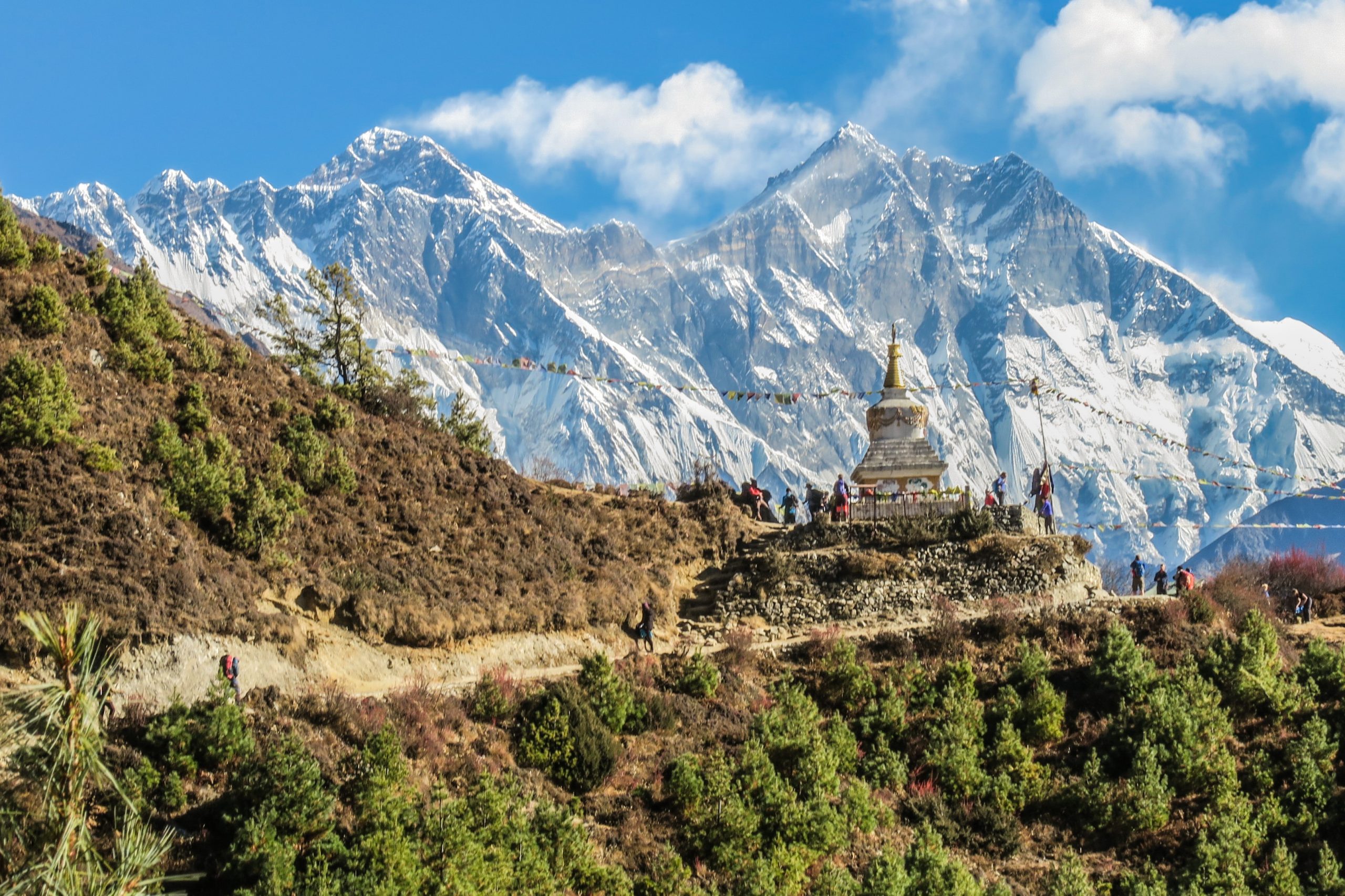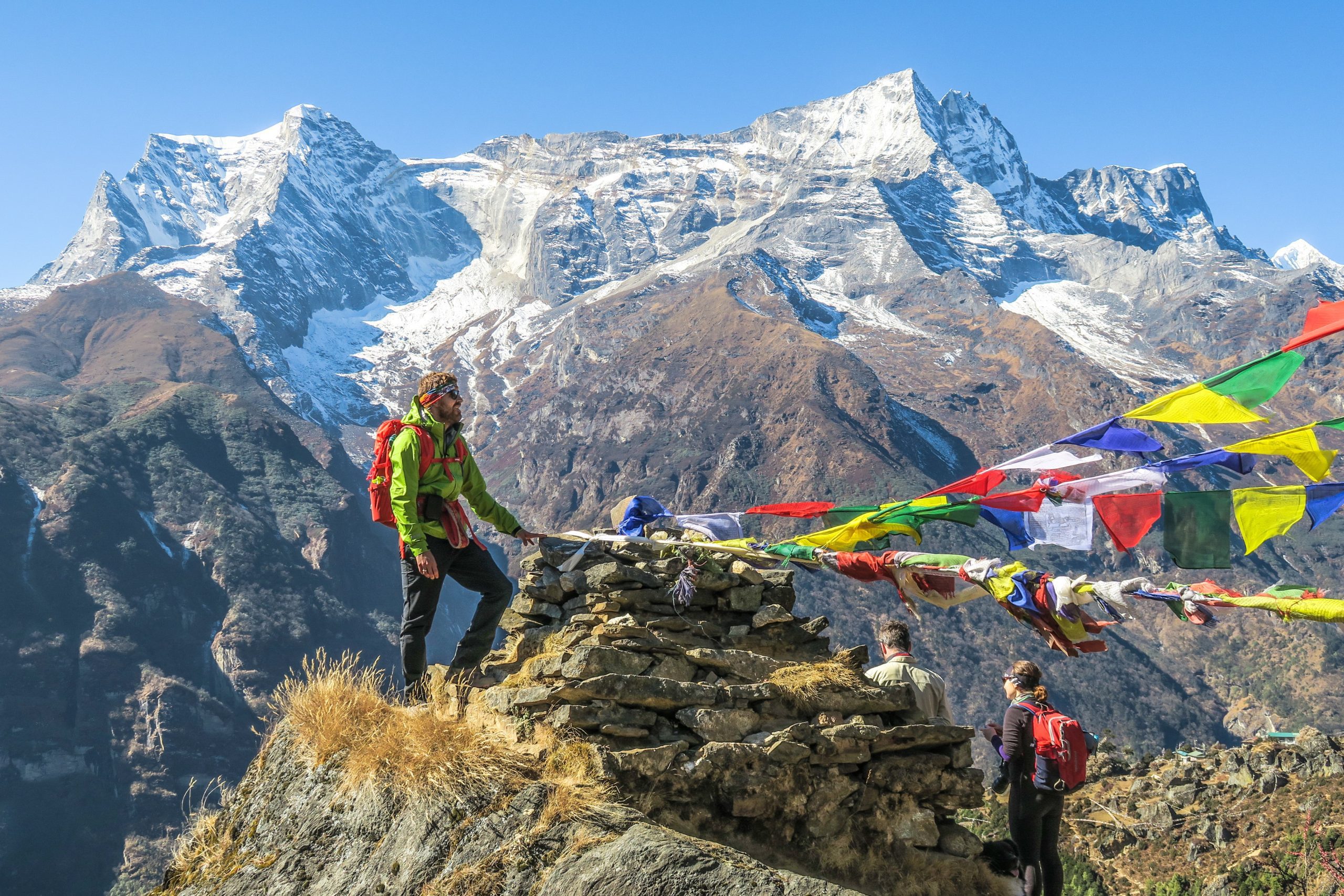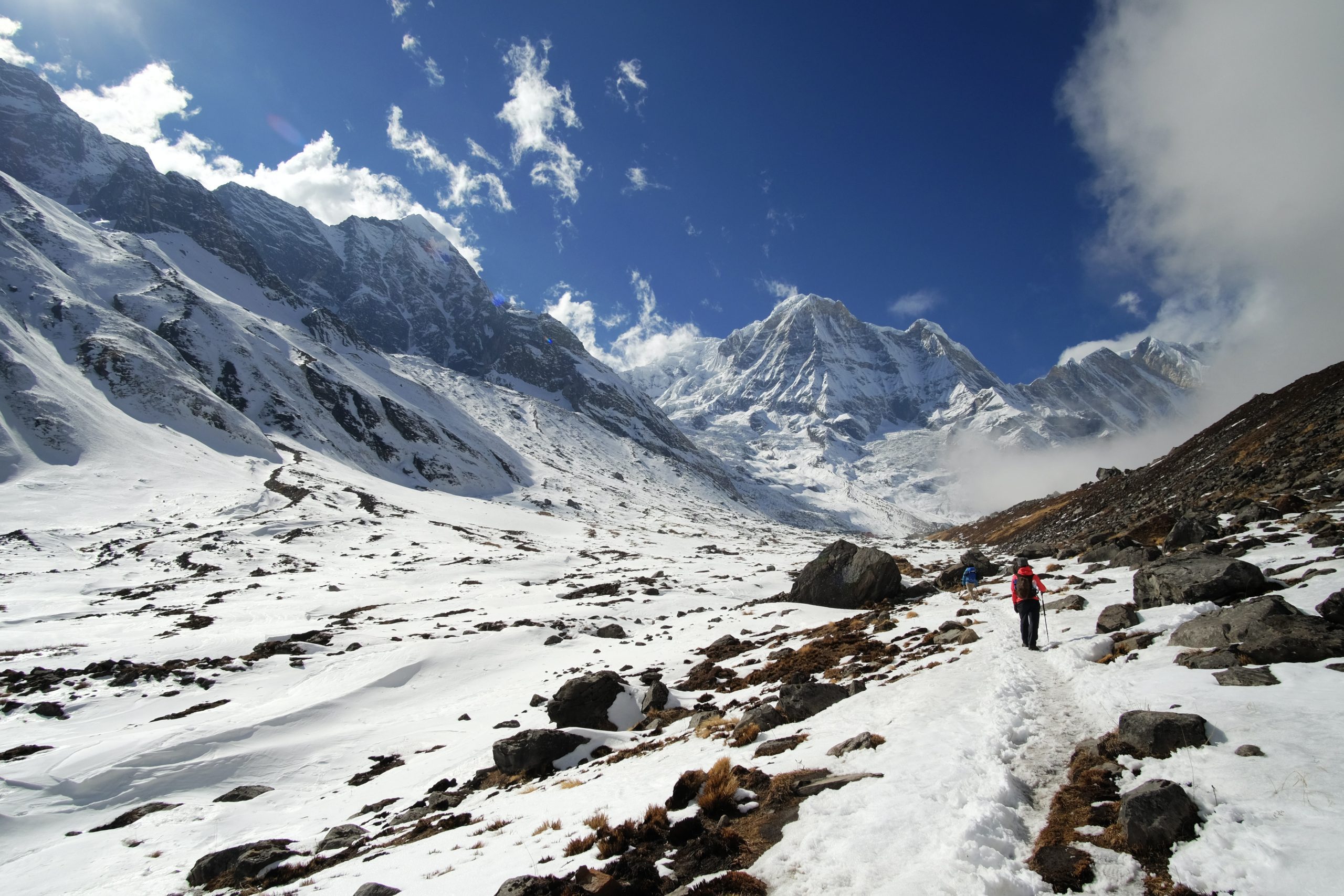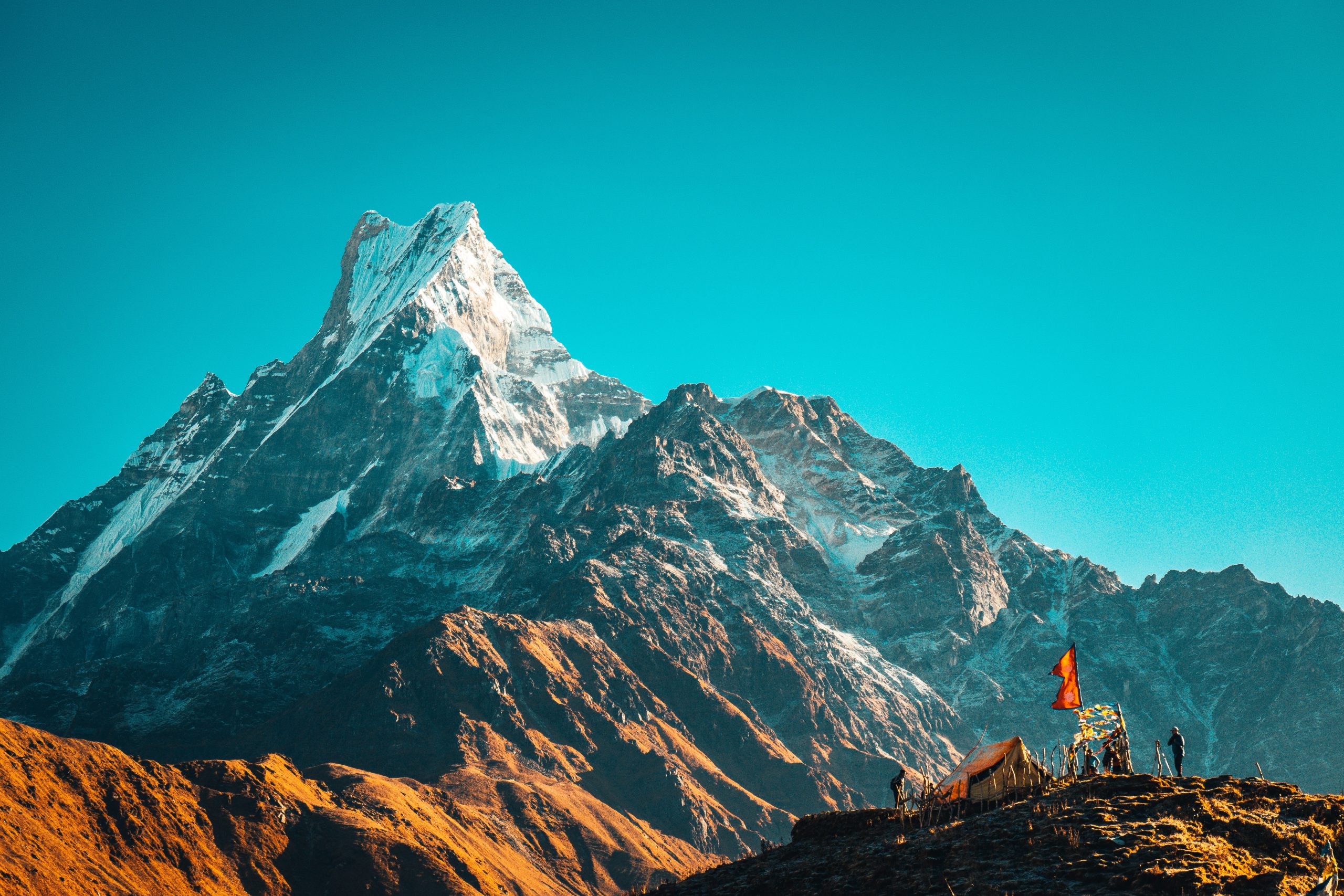You are thinking to go to Nepal but you can’t decide which trek suits you better? In this post, I will compare two of the most popular ones: Everest Base Camp and Annapurna Base Camp. They’re both awesome in their own way, with different vibes, challenges, and mind-blowing experiences.

To give you an overview: Everest Base Camp reaches 5364m, but the maximum altitude of the trek is 5644m. The minimum number of days with proper acclimatization coming back by helicopter (as per Thin Air Program) is 10 days.
On the other hand, Annapurna Base Camp, or Annapurna Sanctuary, reaches 4130m. You have the option to do the Annapurna circuit, but it takes more days, and the trek takes you through the road and dust.
Everest Base Camp:
To start the Everest Base Camp trek, you must take a short flight from Kathmandu to Lukla. The flight is very special crossing the Khumbu Valley. Lukla Airport is well known for its short runway. It’s a beautiful and thrilling experience.
The way up is full of local villages, that will be more distant the higher you go. The first days will be marked for the entrance to the incredible Sagarmatha National Park, the house of Everest, and lots of different flora and fauna. I was really impressed in both treks with the rhododendron trees flourishing with vibrant flowers at such elevation.
Along the way, you will cross so many suspension bridges, the most remarkable is the popular Hillary Bridge, 138 m high. It was named after legendary climbers Edmund Hillary and Tenzing Norway summited Everest. Beautiful yaks and donkeys will cross your path, also sherpas, carrying supplies from village to village, playful kids, and nice people working in the fields.
On the second day, you will reach the Sherpa village of Namche Bazaar, also a trekkers hub, and a nice big village where you can enjoy good food and do your last shopping in case you forgot any gear. We are at 3440m, so we will spend here two nights to acclimatize and adjust the body to the altitude. On the second day, we will visit Everest View Hotel at 3942m. This hotel was listed in 2004 as the Highest Placed Hotel in the world, offering your first panoramic Mount Everest view if the weather is clear.
What I love about this trek is that the mountains accompany you all the trek. Soon we will start to see the majestic Ama Dablam with almost 7000m.
As we continue our ascent, we will visit the colorful Tengboche Buddhist monastery, at 3,867m. We pass by the memorial honoring climbers of those who lose their life on Everest, including George Mallory.
The landscape starts to change as we get higher, vegetation starts to disappear, and you start to see the imponent Khumbu glacier ahead on your right side. The more exciting is yet to come.
On the last day, we sleep in Gorak Shep, the original base camp used in 1952. It sits in a frozen lakebed full of sand and rock. We will wake up very early in the night to hike to Kala Pattar, the Window of Everest to chase the sunrise. If the weather allows, you’ll the best views of Everest and Lothse. Everest is not visible from Everest Base Camp.
After breakfast in Gorak Shep, we’ll collect our belongings and trek 2 hours more in rugged terrain to Everest Base Camp. Reaching Everest Base Camp, you’ll see the Khumbu icefall closer and then you will reach the emblematic huge rock that welcomes you to the camp. With Thin Air, you get to step into the actual climbers’ base camp. It’s where adventurers from all over the globe come together to start their daring journey up Mount Everest.
After lunch, the helicopter will take us from there to Kathmandu, saving us days and enjoying an amazing view.
Annapurna Base Camp:
The gateway to Annapurna Base Camp is the Lake City of Pokhara. You reach by flight or long road trip. From there, we will drive one hour to Nayapol, the beginning of the trek. I chose to do the trek via Poon Hill but there are a few different options.
Poon Hill is a hill station at 3200m famous for offering stunning Fishtail views (Macchapuchhre Peak) and the giants Annapurnas, and Dhaulagiri. It’s also the perfect way to acclimatize. After Poon Hill, the trek loses a bit of altitude to link with the trail that conducts you to Annapurna Sanctuary.
You’ll find endless stairs and lots of ups and downs. The trek will take you through Gurung villages. I especially love the views from the picturesque stupa in Chomrong, at 2170m. As in Everest Base Camp, you’ll find lots of colorful praying flags and wheels, and mani stones.
The daily treks are nice, but the views are mostly covered. On the last day, you reach Macchapruchhe Base Camp providing amazing views to continue to Annapurna Sanctuary. Sleeping there is quite special, also it gives you two chances to see the views the day you arrive and then in the morning. It is worth it to wake up for the sunrise. The 360º views are stunning.
On the way down, we will stop in Jhinu Danda to relax and enjoy the hot springs before taking a Jeep back to Pokhara.
In both treks, you spend the nights in lodges or tea houses. The rooms are pretty basic, but normally very clean. You spend most of the time in the living room, where the stove is on, and you can charge your devices and have food. You can find Wi-Fi there for an extra price. At Annapurna Base Camp the network works better. There are hot showers outside the main building also for an extra price of around 500 rupees.
We hire Sherpas, so you just need to carry to daily backpack. Your duffle bag can weigh up to 15kg. You don’t have to worry about the water as there are enough places to get it, and we provide it as well. In Annapurna Base Camp, from Chomrog they don’t allow to sell plastic so you can get filter water refilled.
The season for both treks runs October- November and April-May. Otherwise, winters are tough with cold and snow, and during summer it’s the rainy season.
The gear list is very similar in both treks. The first days you will be trekking with short sleeves. As you get higher it gets colder, especially at night.
The room at the lodges doesnt have stove, it is just in the living room. You need to make sure your sleeping bad is good enough. We recommed comfort -5. Dont worry if you dont have one, we will help you to rent one in Nepal.
The most important items are a good jacket, waterproof boots, and a good sleeping bag. Full detailed gear list will be posted shortly 🙂
None of them has any technical difficulty. The main challenge will be the altitude, especially on the Everest Base Camp trek. Adequate acclimatization and maintaining a slow, steady pace are crucial. However, we will try to mitigate that as much as we can following some basic tips (link) Even if Everest is considered more demanding, the continuous stairs and undulating terrain that Annapurna involves, make it mentally harder for me.
The weather changes every year. In both treks, you start to trek in short sleeves and the higher you go the colder it gets. normally there is snow in the camps and the temperature in the evening drops considerably. Nothing you can fix with a good jacket 😊
Objectively, Annapurna Base Camp will be less taxing if you are considering your fitness condition.
There is a belief Everest Base Camp will be more crowded because it s considered more popular. The volume of people is actually similar. I never found any of them overcrowded.
There is more to see and experience on the way to Everest Base Camp. Having the chance to see the highest mountain of the world it’s so special. Everest Base Camp it’s a real Base Camp where you can see all the climbers getting ready while at Annapurna Base Camp you won’t see any climbers as the camp is not set there. The views from the Sanctuary win, but I find Everest more enjoyable, even if it is harder because of the altitude.




